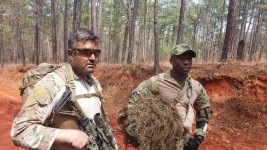Well, I've already inflicted my preferred solution on you all for naming units but since we're off on a tear I'll throw in the following pet peeves I want to see sorted out.
1) I dislike the dual use of the term "regiment" - ERE is just one aspect of it. IMHO all "unit-sized (4-800 folks)" organizations should be called battalions. Infantry battalions, armoured battalions, combined arms battalions, artillery or air defence or engineer or signals battalions. I'm good leaving coy level organizations as coys, sqns, bties etc but draw the line at battalions. Reserve the name regiment for larger-than-battalion organizations such as the Royal Regiment of Canadian Artillery or the Royal Canadian Armoured Regiment or the Royal Regiment of Canadian Signals etc.
2) Lets throw out cap badges for a common and tasteful army cap badge (not a snowflake-like thing.) Do like the Yanks and have a small lacquered pin that reflects the specific battalion they are in at the time - maybe another for the brigade or command if applicable - on posting you take off your old unit pin and put on the new one. Other than the pins, no battalion quiffs allowed - none.
3) yup. get rid of kilts, hackles, funny hats etc.
4) get back to blousing trousers with high boots (not puttees - I draw the line there). stop looking like bus drivers - look like soldiers.
5) pants for everyone regardless of sex or preferred sex - sure, make sure the cut fits the body but everyone wears the same boots, pants, tunic and headdress. Uniform stands for "the same in all cases". Not "George gets to wear the red beret today and Eloise the wedgie"
6) put belts on uniforms - not those wimpy cloth things being proposed but a sturdy leather belt with a common army belt buckle - I'm not adverse to Sam Brownes.
I'm sure that there are a few other things that have pissed me off over the years but that will do for the time being.





